Hair Therapy & Transplantation
Open Access
ISSN: 2167-0951
ISSN: 2167-0951
Case Study - (2023)Volume 13, Issue 3
Background: Low follicular donor reserves present a major challenge to successful hair transplantation and patient satisfaction.
Objective: To develop an updated method of harvesting hair follicles in patients with limited donor reserves and to compare the updated methodology with current standards of practice.
Materials and methods: A two part prospective, randomized case control study was conducted to compare the donor site scars of group A (compact tandem line extraction; new method) and group B (scattered extraction; traditional method). Semi-quantitative evaluations of the donor site scars by intervention group were each examined by two dermatologists. Patient satisfaction for each extraction procedure was assessed with a 10 point questionnaire.
Results: The mean number of extracted follicles in groups A and B was 104.60 and 80.33, respectively (group A; p<0.05). These results suggest optimization of the quantity of harvested follicles while utilizing the compact tandem line extraction technique versus standard scattered extraction. Mean patient satisfaction with extraction site cosmesis was 8.83 and 8.20 for group A and B respectively; indicating increased patient satisfaction with compact tandem line technique versus the traditional scattered extraction method (group A; p<0.05).
Conclusion: We found that the compact tandem line harvesting extraction method can yield more follicles that are viable for transplantation than the traditional scattered extraction technique. Furthermore, this novel technique was significantly associated with increased patient satisfaction with the cosmetic outcome of their hair transplant procedure.
Hair transplantation; Extraction; Follicles; Optimization
Alopecia is a common problem affecting the quality of life of men and women worldwide. There are multiple types of alopecia, androgenic type being the most common. It affects 50% of the world’s population and 51% of males between 40-75 years. Its mean clinical onset for both sexes is between 30-40 years and is inherited in an autosomal dominant pattern.
Androgenic alopecia occurs in androgen responsive hair follicles located in the scalp. These hair follicles contain 5α-reductase which catalyzes the conversion of testosterone to 5- Dihydrotestosterone (5-DTH). 5-DTH then binds to the cytosolic androgen receptor and this complex translocates to the nucleus where it causes upregulation of genes responsible for collagen production. Increased collagen deposition in the scalp leads to perifollicular fibrosis which decreases tissue perfusion and oxygen delivery resulting in impaired hair growth and ultimate hair follicle loss. Interestingly, androgen responsive hair follicles located in the face and other body parts do not experience alopecia because they express 5α-reductase but few androgen receptors. These findings suggest that fibrosis, decreased hair follicle perfusion and alopecia only occur in the presence of elevated 5 DTH and androgen receptors [1].
Great progress has been made in the treatment of androgenic alopecia by harvesting hair grafts from a donor area, usually the back of the scalp and relocating them to a hairless area. There are three different hair transplant techniques, the Follicular Unit Transplant (FUT), the Follicular Unit Extraction (FUE) and the Suction Assisted Follicular Extraction and Reimplantation (SAFER) methods. Each of these transplantation procedures only differs in their graft harvesting technique but follow the same graft insertion process. Traditionally, these hair follicle harvesting methods have used a scattered extraction method, but in our practice, we have perceived that a linear follicle graft extraction method, preserving one line follicle in between extracted compact tandem line yields an increased number of viable follicles than the usual extraction technique. The compact tandem line technique also results in improved donor site cosmesis.
Patient satisfaction with hair transplantation general depends on the quality of the transplanted hairline and cosmesis of the donor site scar. The success of the procedure is influenced by multiple factors, such as the patient’s personal perceptions, previous unsuccessful hair transplants and complications such as scalp necrosis. An increased quantity of viable donor hair follicles optimizes the clinician’s ability to create a natural hairline. We hypothesize that the compact tandem line extraction technique could improve patient satisfaction with regards to the cosmesis of the transplanted hairline and donor site scar in patients with an overall low number of viable hair follicles. Herein, we aim to compare compact tandem line extraction to scattered harvesting follicular unit extraction method and to report on patient satisfaction [2].
A total of n=30 patients signed informed consent and enrolled in the two part prospective, randomized, case control study. Approval from corresponding ethical review board was obtained prior to conducting the study. All patients (n=30) were male with a mean age of 36 ± 11 years. The study aimed to compare two exaction techniques from two 2 cm × 2 cm quadrangles, group A and group B, drawn at the donor site of each patient (Figure 1). The compact tandem line method was employed for group A; the scattered extraction method was used for group B. The number of extracted follicles from groups A and B and independently quantified and compared. The scars of both groups were examined by two dermatologists; patient satisfaction with the outcome of each procedure was assessed with questionnaire administered one year status post hair transplantation (Figure 2).
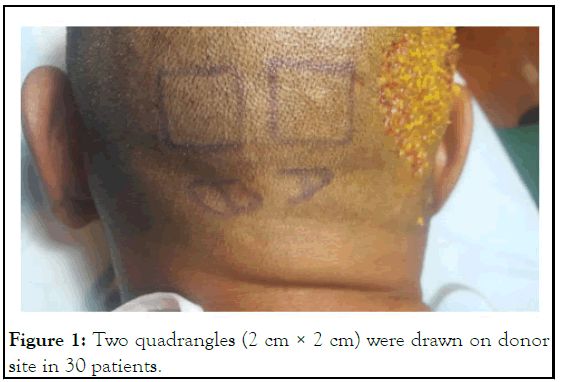
Figure 1: Two quadrangles (2 cm × 2 cm) were drawn on donor site in 30 patients.
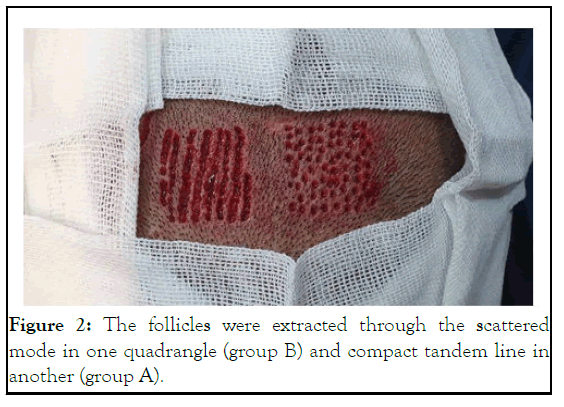
Figure 2: The follicles were extracted through the scattered mode in one quadrangle (group B) and compact tandem line in another (group A).
Statistical analysis
The mean difference between group A (compact tandem line extraction) was compared to group B (scattered extraction) using a paired sample t-test (p<0.05).
The mean number of extracted follicles in groups A and B was 104.60 and 80.33, respectively (group A; p<0.05) [3-6]. Interestingly, group A yielded 23-25 more hair follicles than group B. The assessment of scar healing time by two dermatologists revealed that it was the same or less for compact tandem line when compared to scattered extraction (Figures 3-5).
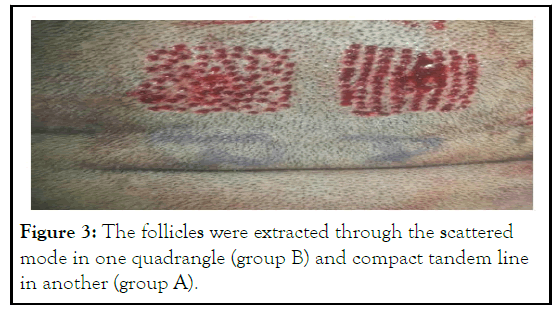
Figure 3: The follicles were extracted through the scattered mode in one quadrangle (group B) and compact tandem line in another (group A).
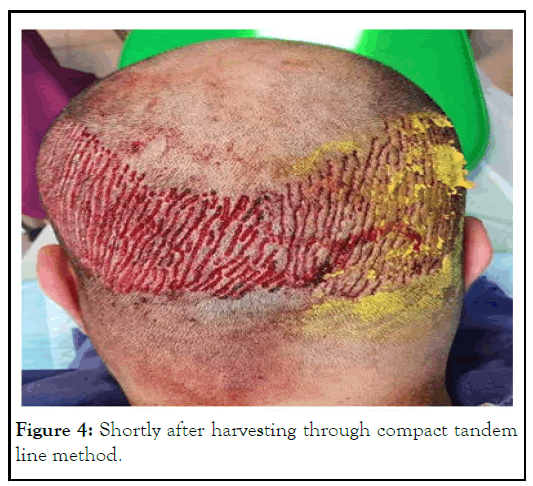
Figure 4: Shortly after harvesting through compact tandem line method.
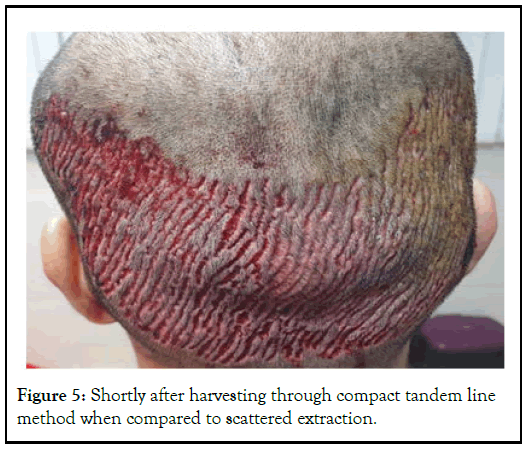
Figure 5: Shortly after harvesting through compact tandem line method when compared to scattered extraction.
Analysis of the patient satisfaction questionnaire demonstrated significantly increased patient satisfaction with the cosmetic results of the compact tandem line technique versus the traditional scattered extraction method. In fact, the mean patient satisfaction regarding their scars was 8.83 and 8.20 in groups A and B, (group A; p<0.05) (Tables 1 and 2) [7,8].
| N | Mean | Std. deviation | P value | |
|---|---|---|---|---|
| Group A (Compact tandem line) | 30 | 104.6 | 3.65 | 0 |
| Group B (Scattered) | 30 | 80.33 | 5.21 | 0 |
Table 1: Mean number of extracted follicles in both groups.
| N | Mean | Std. deviation | P value | |
|---|---|---|---|---|
| Group A | 30 | 8.83 | 1.12 | 0.035 |
| Group B | 30 | 8.2 | 1.16 | 0.035 |
Table 2: Mean patient satisfaction with scars in both groups.
We have demonstrated that scattered extraction of the follicles yields less hair follicles than the compact tandem line extraction method. Our results show that perpendicular lines, tandem shaped, yielded at least 23-25 follicles more than the scattered mode in each 2 cm × 2 cm of the donor site [9-12]. Therefore, the former technique produces more hair follicles for dense transplanting of the hairline (Figures 6 and 7) [13,14].
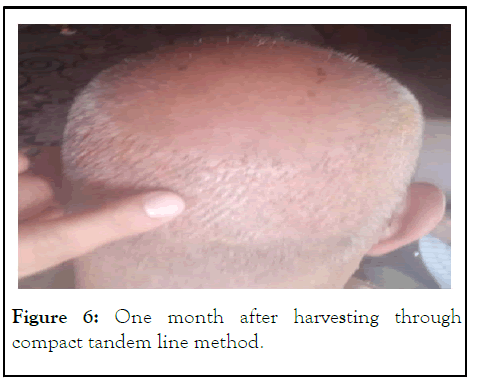
Figure 6: One month after harvesting through compact tandem line method.
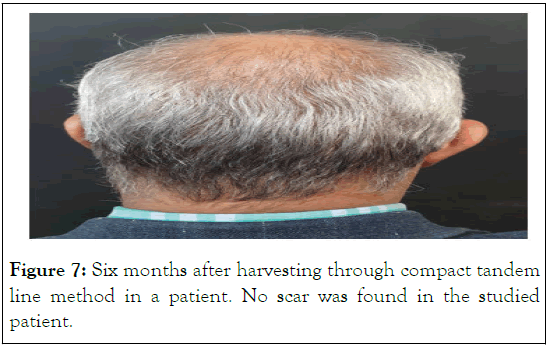
Figure 7: Six months after harvesting through compact tandem line method in a patient. No scar was found in the studied patient.
We have been performing the compact tandem line extraction method for the past two years on at least 500 patients. So far, no adverse outcomes, including poor scarring/healing, have been reported. As such, we recommend that this method be implemented by our colleagues to optimizing harvest yield, hairline and scar cosmesis and overall patient satisfaction.
[Crossref] [Google Scholar] [PubMed]
[Google Scholar] [PubMed]
[Crossref ] [Google Scholar] [PubMed]
[Crossref ] [Google Scholar] [PubMed]
[Crossref ] [Google Scholar] [PubMed]
[Crossref] [Google Scholar] [PubMed]
[Crossref] [Google Scholar] [PubMed]
[Google Scholar] [PubMed]
[Crossref] [Google Scholar] [PubMed]
[Crossref] [Google Scholar] [PubMed]
[Crossref] [Google Scholar] [PubMed]
[Crossref] [Google Scholar] [PubMed]
Citation: Feily A, Feily A, Ghahartar M, Suarez P, Fort MKR, Zarenezhad M (2023) An Update on Feilyâ??s Method for Dense Hair Transplantation More Harvesting, Less Scarring. J Hair Ther Transplant. 13:212.
Received: 15-May-2023, Manuscript No. HTT-23-24157; Editor assigned: 18-May-2023, Pre QC No. HTT-23-24157(PQ); Reviewed: 01-Jun-2023, QC No. HTT-23-24157; Revised: 02-Jun-2023, Manuscript No. HTT-23-24157(R); Published: 30-Jun-2023 , DOI: 10.35248/2167-0951.23.13.223
Copyright: © 2023 Feily A, et al. This is an open-access article distributed under the terms of the Creative Commons Attribution License, which permits unrestricted use, distribution and reproduction in any medium, provided the original author and source are credited.